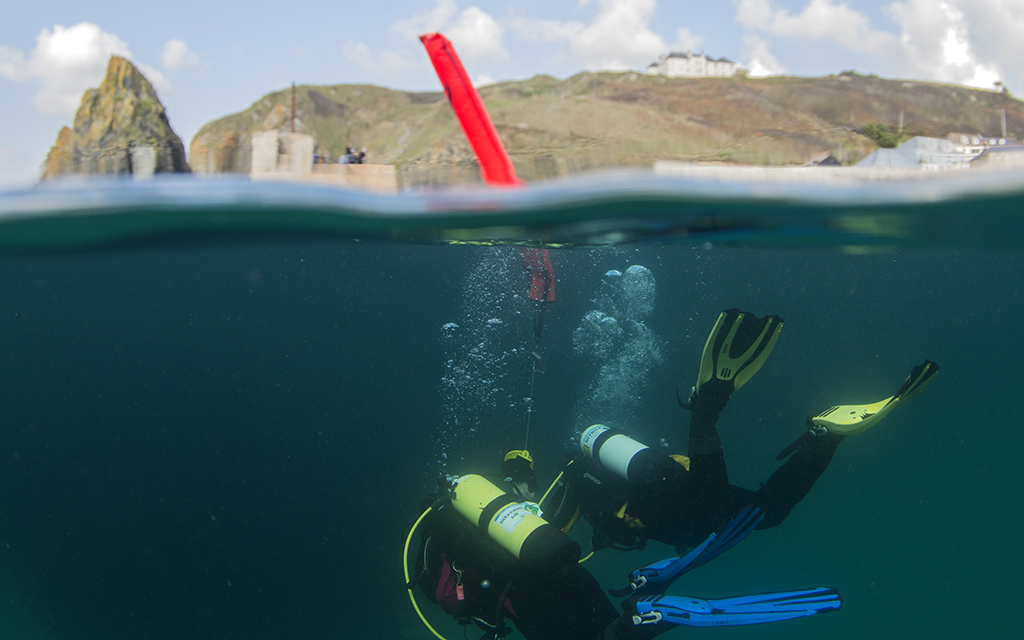
BSAC would like to remind all members about the safe use of Surface Marker Buoys (SMBs) and Delayed Surface Marker Buoys (DSMBs).
DSMBs and SMBs are a crucial tool for diver safety, enhancing visibility and communication with surface support. However, divers must ensure that they are able to release the DSMB or SMB quickly should it get snagged, pulled or the line get stuck.
Following on from the June 2024 safety bulletin issued by the Marine Accident Investigation Branch regarding a fatal injury to a diver after contact with a recreational dive support boat BSAC would like to remind all members about the safe use of SMBs and DSMBs and advise that the reel should also not be clipped to a diver when conducting stops.
Entanglement
The line connecting the SMB to the reel or spool can easily become tangled with other equipment, underwater structures, or marine life. If the line gets snagged, it can restrict your movement and potentially lead to rapid, uncontrolled ascents or descents if the line is not able to be released quickly. It is advised that the SMB/DSMB should not be clipped to a diver at any time.
Buoyancy control
Maintaining neutral buoyancy is critical for safe diving. If a DSMB or SMB is clipped to you and becomes trapped or caught by anything in the surface of the water, it can affect your buoyancy, making it difficult to stay in control. Losing control of buoyancy can lead to collisions with the underwater topography, other divers, cause injury to yourself and potentially cause DCI if you are rapidly pulled towards the surface.
Best practice
The following procedures are recommended for the use of Delayed Surface Marker Buoys (DSMBs). These procedures should be thoroughly discussed with and understood by all team members prior to undertaking any dives. This includes all divers and members of the surface party and boat skipper.
- Divers using surface marker buoys should clearly label buoys with the name of their owners and labelling/colour noted by the Dive Manager.
- When deploying a DSMB from depth, the diver should not attach the reel to themself as they may be carried up by the device if the reel jams. Great care should be taken to avoid entanglement in the line.
- When carrying two DSMBs on a dive, the general UK dive community consensus is that an orange or red buoy is deployed under normal diving conditions. In an emergency, or when assistance is required, a yellow buoy should be deployed. Whilst a yellow DSMB is often used in an emergency situation this is not always the case. It's important that all divers and surface cover are clearly briefed on specific dive protocols and any specific meanings or surface actions required upon deployment of a specific colour DSMB and/or labelling on an DSMB or deployment of multiple DSMBs together.
- When using a yellow buoy as an emergency buoy it's useful to clearly mark on the buoy the word 'Emergency' together with the diver’s name. Once a yellow buoy is seen the support team and or boat can then initiate the briefed and agreed emergency protocols depending on the situation.
This Learning Curve article 'Safety and the dSMB' was originally published in SCUBA magazine, Issue 149, October 2024.
Join the BSAC community
The BSAC network is working together to keep people connected to the sport. With online training, special interest webinars, competitions, support to clubs and the trade, and much more... we'd love you to join us.

 Author: Sophie Heptonstall | Posted 08 Jul 2024
Author: Sophie Heptonstall | Posted 08 Jul 2024



